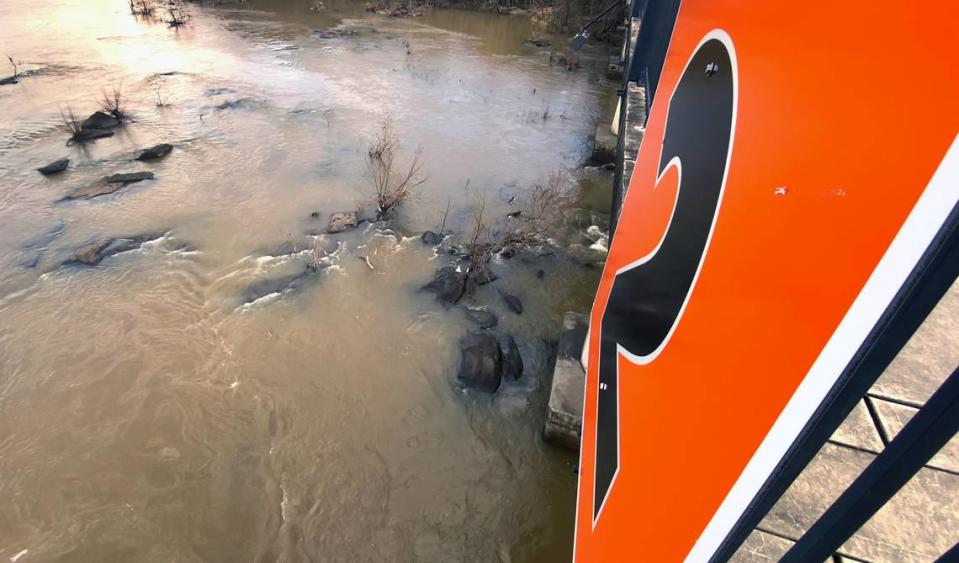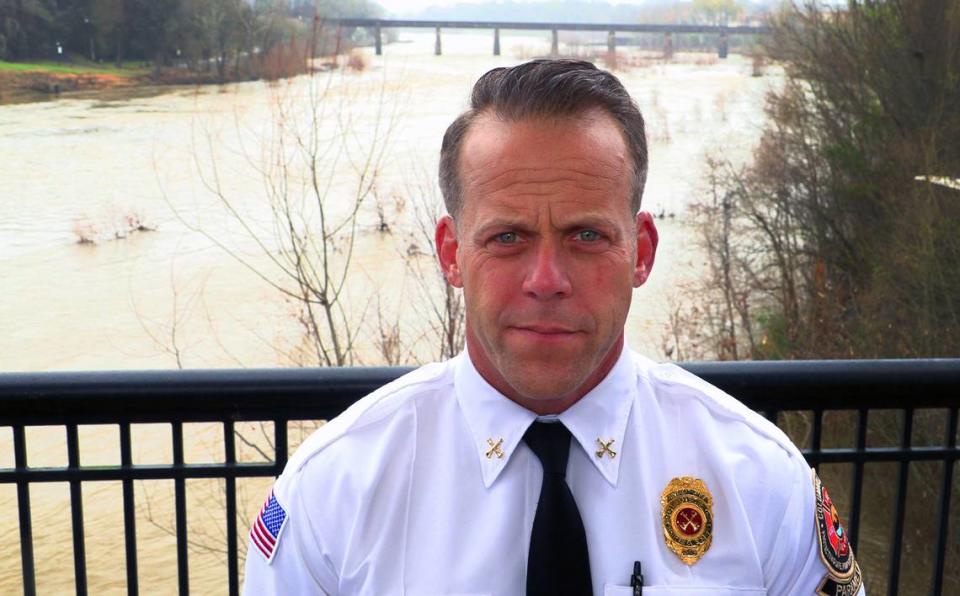Why are there numbered signs along the Chattahoochee River? Curious Columbus has an answer
Columbus residents might have noticed a round, yellow sign with the number “4” on it hanging on the Dillingham Street Bridge. Or maybe they’ve seen the orange, square sign on the Frank K. Martin Pedestrian Bridge with a “2.”
These signs designate the new Columbus Fire and EMS River Safety Zones that can serve as reference points for first responders if someone needs emergency help anywhere in the Chattahoochee River.
The water can be dangerous, John Shull, fire marshal and division chief at Columbus Fire and EMS, told the Ledger-Enquirer. And years with no drownings, like last year, are very rare.
“We often have more than one fatality, unfortunately, in the river,” he said.
His department works with other agencies to prevent drownings. And if there is an incident, Shull said, they want to ensure there is the right system in place for crews to get there quickly.
Residents can see there is a shape, number and color on every bridge over the river, he said. This system using different numbers, colors and shapes helps ensure communication in the event there’s a language barrier between callers and dispatchers.
“Maybe we can get one piece of that information,” Shull said. “If we know it’s blue, well, there’s only one placard out here that’s blue.”
The five river safety zones are:
Zone 1 Purple Triangle from Oliver Dam to North Highland Dam
Zone 2 Orange Square from North Highland Dam to Pedestrian Bridge (14th Street)
Zone 3 Blue Octagon from Pedestrian Bridge to 13th Street Bridge
Zone 4 Yellow Circle from 13th Street Bridge to Dillingham Street Bridge
Zone 5 White Diamond from Dillingham Street Bridge to US 280 Oglethorpe Bridge
There are plans to continue expanding the zones farther south, Shull said. But officials believe they’ve covered some of the primary areas where incidents occur.

Accurate location information
If someone calls 911, he said, dispatchers will ask for information about what zone they’re in. These designated zones will especially help individuals who are not from Columbus identify where they are in the water.
“If you were to ask them what’s on the bank or ‘what do you see along the river,’” Shull said. “They might not be familiar with many of those buildings that we are familiar with.”
Fire Station 1 is very close to the river, Shull said, and is where the water rescue teams are located. This includes divers and equipment needed for water rescues or recoveries.
These teams know exactly where to go in each zone to launch vehicles or station observers, Shull said.

People on or near the river should look to the middle of the nearest bridge to find signs indicating which zone they’re in, Shull said. Along with providing emergency crews with a location, the zones also tell rescue teams what equipment they might need to bring.
“Where you’re located on the river is going to determine what type of watercraft they’re going to use,” he said. “It’s not just where they put the watercraft in the river.”
People calling for help may also be asked about the water conditions. But the most important information people need to tell dispatchers is if someone is injured or underwater, or any other important information about the victim’s condition.
If someone calls Phenix City’s emergency dispatch, Shull said, their leadership might refer callers to Columbus’ fire and EMS knowing they have the watercraft and personnel to answer the call.
“We could work with Phenix City, as well,” he said. “And we do have a mutual aid agreement. And it wouldn’t be the first time that Phenix City and Columbus worked together.”
Ensuring people stay safe in the Chattahoochee River is ongoing work for officials, Shull said. This includes when officials began requiring people to wear life vests in the river, and the signs detailing the rule.
“We have a lot of people that come here from out of town,” Shull said. “They probably don’t understand how dangerous the Chattahoochee River is.”
Reporting contributed by Mike Haskey.
If you’ve got a question about something you’ve seen in Columbus, fill out our form so Curious Columbus can provide an answer.

